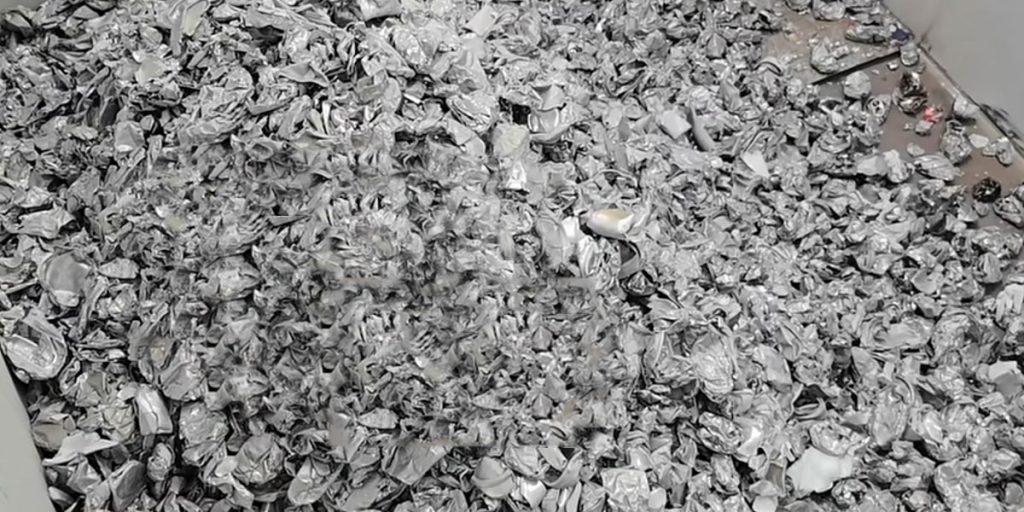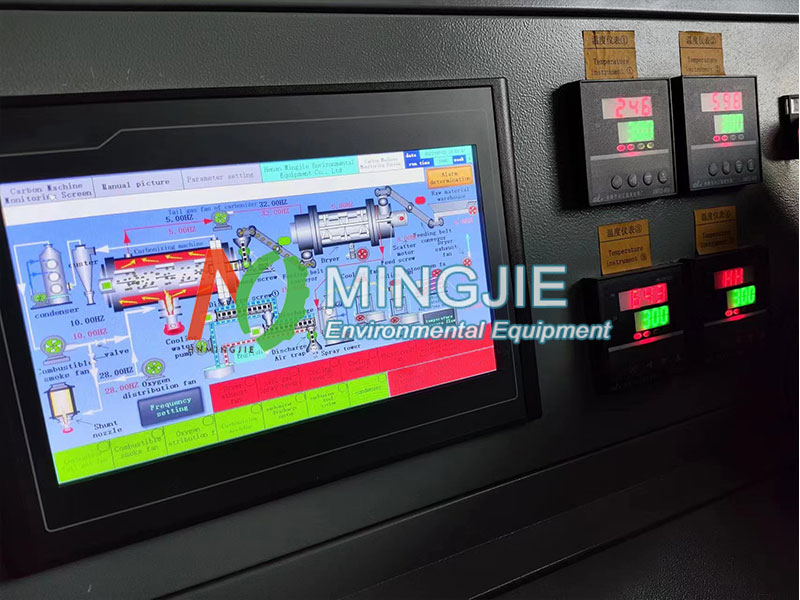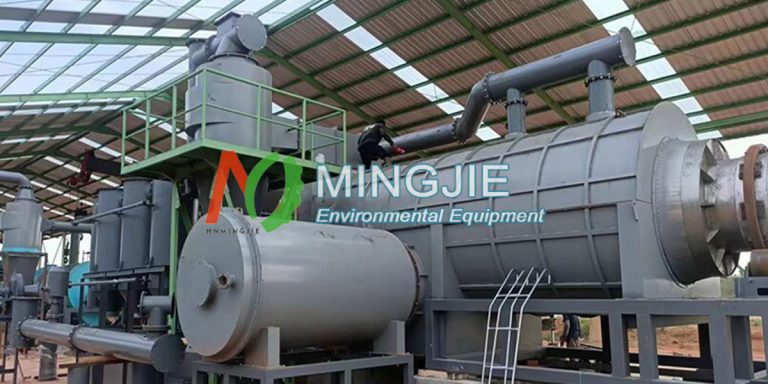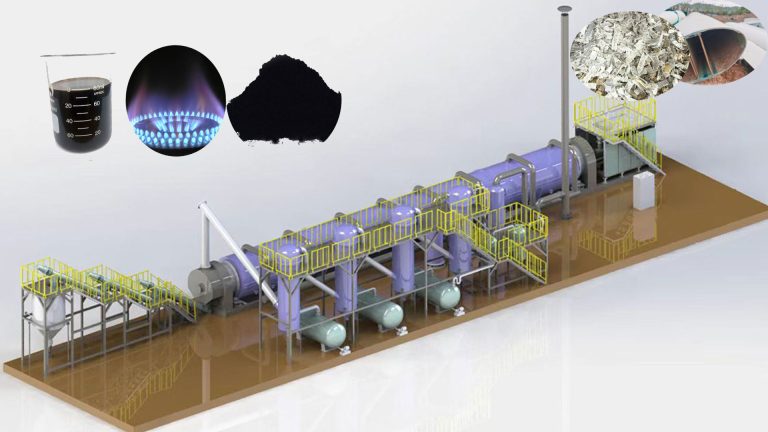The beverage cans depainting machine utilizes pyrolysis technology, eliminating the need for chemical reagents throughout the process. Furthermore, in an oxygen-free or low-oxygen pyrolysis environment, the gases produced by paint decomposition are primarily recyclable pyrolysis gases. After purification, these gases can be reused as fuel, significantly reducing harmful emissions.
The pyrolysis machine for beverage cans depainting is also equipped with advanced exhaust gas purification devices to ensure emissions meet environmental standards. Through a series of efficient treatment processes including condensation, adsorption, and catalytic combustion, it reduces the content of harmful substances in the exhaust gas to extremely low levels.

Pyrolysis equipment offers environmental advantages as a tool for depainting metal cans. Traditional beverage cans depainting methods, such as chemical depainting, require large amounts of strong acids and alkalis. After completing the depainting process, these reagents are converted into wastewater containing heavy metals and organic pollutants. Incineration depainting, on the other hand, produces large amounts of pungent and harmful exhaust gases, including sulfur dioxide (SO₂), nitrogen oxides (NOₓ), and highly toxic dioxins.
Beverage Cans Depainting Machine for Metal Recycling
Beverage cans depainting machine plays a crucial role in improving the quality of recycled metals. After depainting, the metal purity of beverage cans is significantly increased, with virtually no paint residue remaining on the surface.
In the manufacture of food metal packaging and electronic component casings, extremely high requirements are placed on metal purity and surface cleanliness. Tinplate after heat depainting can be directly processed through stamping and stretching without complex surface pretreatment. This not only improves processing efficiency but also effectively avoids product quality defects caused by residual impurities.
Beverage cans depainting machines are also used to recycle aluminum from aluminum beverage cans. High-purity aluminum, during the smelting and casting process, can produce aluminum alloy products with more stable performance and superior quality. This provides a high-quality raw material guarantee for the aerospace and automotive manufacturing industries.

Advantages of Pyrolysis Metal Can Depainting Equipment
Compared to traditional chemical and physical depainting processes, pyrolysis metal cans depainting machine demonstrates significant advantages in environmental friendliness, efficiency, cost, and product quality.
High Depainting Efficiency
The pyrolysis beverage cans depainting machine enables continuous production, with a single production line capable of processing 20-50 tons per day. The coating decomposition rate during pyrolysis is over 99%. The treated beverage cans have no residual coating, meeting subsequent smelting requirements.
High Environmental Standards
No strong acids or alkalis are used throughout the process, and there is no wastewater discharge. The exhaust gas is purified to meet national emission standards, and the carbon slag is treated harmlessly. The oil and gas resources generated during pyrolysis can be recycled, aligning with the circular economy concept.
High Metal Recovery Rate
The pyrolysis process uses low-temperature indirect heating, resulting in no oxidation loss of the metal substrate (aluminum, iron). The recovery rate can reach over 99.5%, and the metal purity remains unaffected. The clean tank surface is free of corrosion, eliminating the need for additional impurity removal agents during subsequent smelting, thus reducing smelting costs.

High Degree of Automation
The continuous pyrolysis equipment is equipped with a PLC control system, enabling fully automated operation. Only 1-2 operators are required to monitor equipment operation, significantly reducing labor costs. The system has real-time monitoring and alarm functions for key parameters such as temperature, pressure, and liquid level, ensuring safe and stable equipment operation.
Low Overall Cost
Energy recycling (non-condensable gas reburning) reduces the energy consumption of the pyrolysis equipment by 30%-50% compared to traditional processes. No chemical reagents or wastewater treatment are required, and the recovered pyrolysis oil can generate additional economic benefits. The investment payback period for continuous pyrolysis equipment can typically be controlled within 2-3 years.




